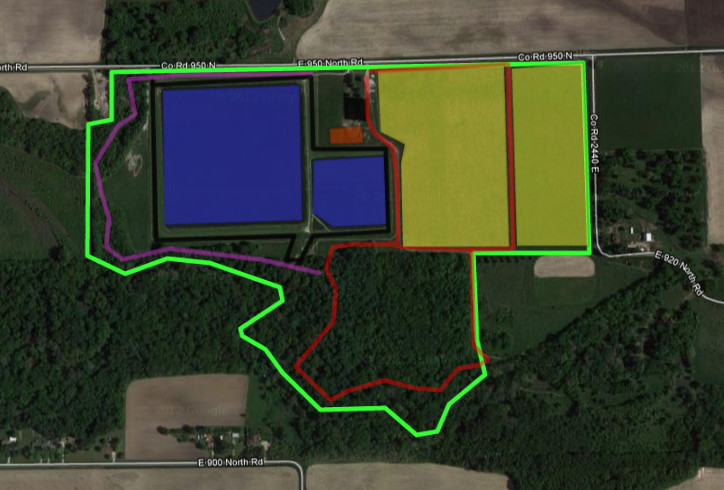Blackhawk Park is located across (east) the Rock River from Klehm. Return to IL 2 and continue north 3 blocks to the stoplight intersection of Marchesano Driver/15th Avenue (the name changes from one side of IL 2 to the other) and turn right. You will cross the 15th Avenue bridge. At the other end of the bridge is the entrance to Blackhawk Park on the right. A baseball stadium is there at the corner. Drive slowly along the river and check the trees. The river downstream of the bridge often has waterfowl, and Carolina Wrens can often be found along either side of the river or in the limestone ravines on the east side. Wintering falcons (Peregrine and Merlin) often are seen along this stretch of river, and north of 15th Avenue on the other side of the bridge. In spring, this area sometimes has singing Carolina Wrens. Watch for roaming gulls and waterfowl, too.
The new Morgan Street bridge is now open and provides good views of the open water below the Fordham Dam. Park on Buchanan Street, which is at the west end of the bridge access, and walk along the sidewalks (the downstream side has been plowed, the upstream side has a wildcat path pressed into the snow, and there are snow piles between street and sidewalk which makes moving from one side of the bridge to the other difficult. Access the north side from Buchanan Street-there is an opening for the sidewalk on the north side of Morgan Street and west of the bridge). You can set up a scope on the sidewalk.
North of 15th Avenue bridge is a gravel bar in the middle of the river. This is an overnight roost for waterfowl, particularly geese. There is an open access on the east bank opposite the gravel bar that is right along a street that is opposite the entry into Blackhawk Park. Just upstream from the gravel bar is a very old, tall Cottonwood that is a regular perch for Bald Eagles. Check the river for ducks. Carolina Wrens are often seen/heard along this stretch of the river, too.
By Dan Williams
